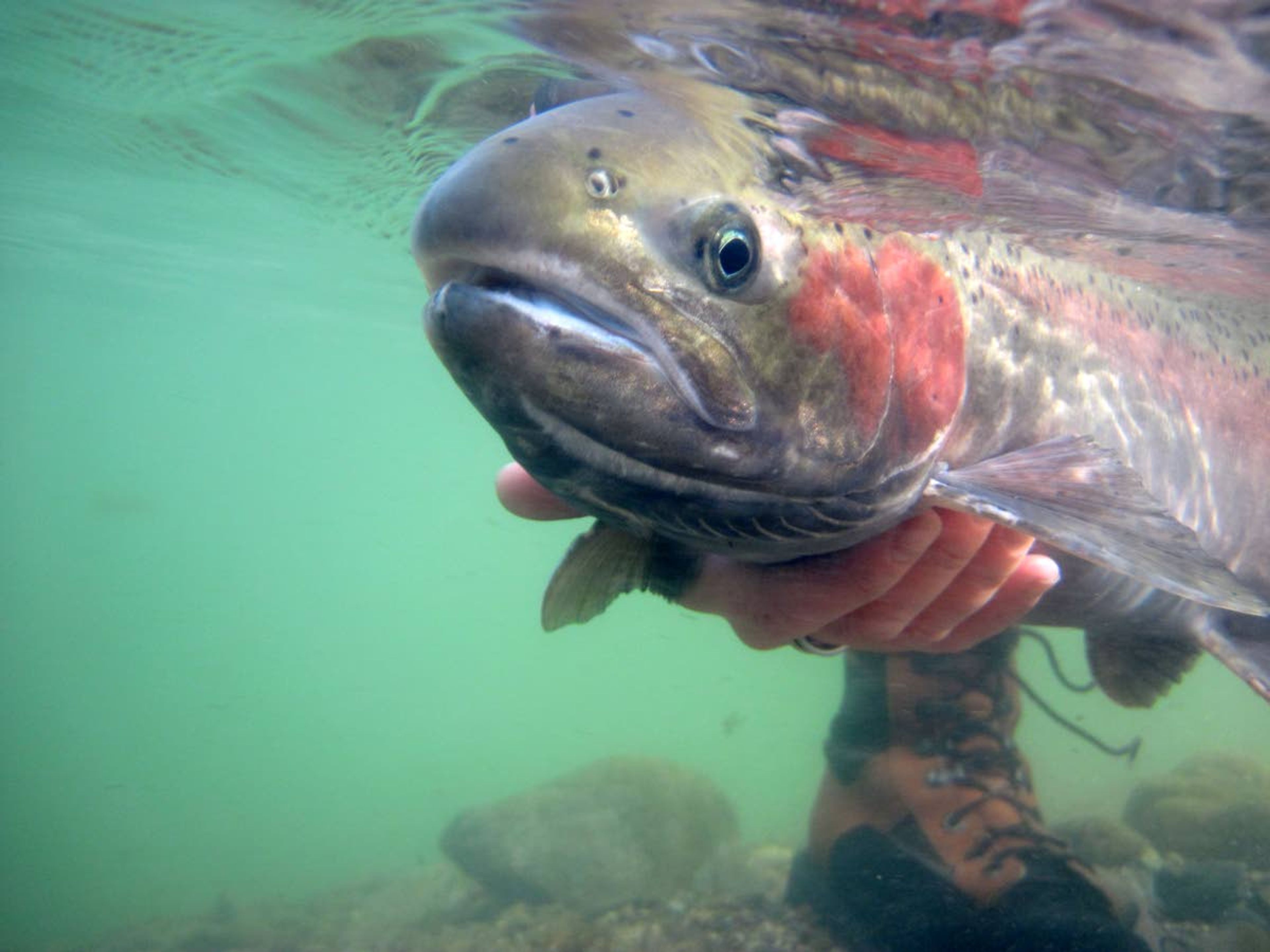Steelhead limit cut on Snake, Salmon, Little Salmon
Adjusting to another poor return of steelhead, the Idaho Fish and Game Commission cut daily bag limits for the popular sport fish on the Snake, Salmon and Little Salmon rivers at its meeting Thursday.
Anglers now will be able to keep two steelhead per day in the season that opens Sept. 1. Before the change, the bag limit was three fish per day.
The move follows a recommendation from Idaho Department of Fish and Game fisheries managers and is based on low returns of steelhead to date. It is the fourth year in a row that steelhead returns to the Snake and Columbia rivers are tracking well below the 10-year average. Through Tuesday, 54,659 steelhead had been counted at Bonneville Dam since July 1. That is better than returns seen in the past three years but still less than the 10-year average of 126,267. It’s a similar story at Lower Granite Dam on the Snake River, where 2,792 steelhead have been counted this summer compared to the 10-year average of 5,234.
Given those numbers, fisheries managers want to make sure enough steelhead return to the Sawtooth and Pahsimeroi hatcheries along the upper Salmon River and the steelhead trap at Hells Canyon Dam on the Snake River to meet spawning goals, known as broodstock.
“I would say we are fairly confident we will meet broodstock, but because the run is not large, we think we need to be a little conservative and reduce bag limits to make sure we do meet broodstock,” said Joe DuPont, regional fisheries manager at Lewiston.
This will be the fourth year in a row with reduced limits. Bag limits were slashed to just one fish per day in 2019 and 2018 and to two fish per day in 2017.
On the bright side, DuPont said based on passive integrated transponders, or PIT tag, detections at Bonneville Dam, more steelhead bound for the Sawtooth and Pahsimeroi hatcheries and the Hells Canyon trap have spent two or more years in the ocean compared to those that have been there for just one year.
“It’s very unusual,” he said. “The nice thing about that, those larger fish have more eggs, so we may not need as many to show up at (hatchery) traps.”
He said the higher return of older hatchery fish bound for the Salmon and Snake rivers may be a response to poor ocean conditions that stalled growth rates.
“Sometimes if fish don’t reach a certain size in the ocean they stay another year,” he said.
DuPont said he is hopeful the surprise strength of the two-ocean component will be repeated by B-run steelhead bound for the Clearwater River. That later returning run is dominated by fish that spend two years in the ocean. Fisheries officials don’t have enough data yet to judge the strength of the B-run.
Barker may be contacted at ebarker@lmtribune.com or at (208) 848-2273. Follow him on Twitter @ezebarker.








